The National Trust has recently announced that it intends to kill the wild boars living on its Stourhead estate because of public safety fears. Yet, rewilding advocates claim that they are not dangerous. With a wild boar population of 1635 in the Forest of Dean, another concentration in the Weald and sightings all over Great Britain, the debate is likely to continue.
So how dangerous are wild boar? In Britain there are a few thousand; in France we have two million of them. Here in France, despite the human fatalities – almost exclusively hunting and road traffic accidents – despite their potential for virus transmission, despite the crop damage, they are considered no more dangerous than large dogs. Why?
Extract from work in progress The Implausible Rewilding of the Pyrenees
Wild boar are already half-way up the gangplank of the Ark of British rewilding. Although beavers are currently making a bid for the lead, wild boars have already shouldered their way past lynx and wolves.
There are two million wild boar in France, a figure that has been increasing, partly as a result of milder winters. [source] With so many around, walkers regularly come across signs of them: hoofprints in mud; grass grubbed up for edible roots; a missing patch of bark on trees where they have rubbed to get rid of parasites. Hiking in forest, I am sometimes startled by a rustling in the undergrowth. It is followed by an offended grunt and then a wild crashing as the boar storms away, breaking through fallen branches. The cascade of sound increases as birds take to the wing and repeat the alarm. But I’ve only actually seen wild boar close too occasionally, always at dusk, when they are out searching for their evening meal. The last time, illuminated by my car headlights, a big sow was crossing the road. She was followed by three smaller females and a string of youngsters, identifiable by their horizontal brown and gold stripes, bobbing along behind. Difficult to say how many youngsters, six-seven-eight; I braked as they disappeared into a vineyard. Seeing them innocently crossing the road added a touch of magic to my evening, particularly as I managed to brake early enough for them to get away.
Unfortunately, not everyone is so lucky with road hogs. In France, there are tens of thousands of accidents each year involving wild boar and deer, with wild boar accounting for about 40% of them. A study, now over ten years old, noted that these accidents – as well as the deaths and injuries to the unfortunate animals – cost 200 million euros annually and kill thirty people. (Collisions with wild animals represent less than one percent of human fatalities.)
For the record, there are about thirty-five road traffic accidents involving wild boar in the Forest of Dean each year. There has been just one fatal car accident in Britain: in January 2015 a man was killed on the M4 in Wiltshire when a wild boar ran out in front of him. There are perhaps a few thousand wild boars in Britain; we have millions of them on the Continent. Whilst there is some concern about the accidents here, there is no call for boar to be exterminated.
There are also deaths in hunting accidents. I personally don’t feel safe when I hear the pop-pop of the guns. Two people living in nearby villages have been killed in the last ten years. The first was a woman who was out for a stroll in the vineyards with her grandson. The boar had been injured by a bullet and was fleeing the hunters. When it saw the woman and child, it charged: they were trapped between two rows of vines. Only the child was agile enough to slip between the plants.
The second victim was out collecting mushrooms. Bending down, parting the undergrowth, scrabbling at the earth, he was mistaken for a wild boar. The hunter hadn’t paid his licence, boar hunting was forbidden that day anyway and, to cap it all, he was a retired policeman!
On average in France, fifteen people are killed each year in hunting accidents – again mostly boar- and deer-related – though with some four million bullets flying around perhaps this isn’t all that surprising. Logically, French people don’t blame wild boar for the hunting accidents, they blame the hunters; indeed hunting is becoming less popular, partly as a result of non-hunters being killed.
I feel sorry for those people who die, but it would be churlish to blame the wild boars. Risk is a part of life and the presence or absence of millions of wild boar in France makes no significant difference to the number of fatalities.
But do wild boar make unprovoked attacks on humans? Research published in 2013 identified an average of 3.8 human deaths per year globally. Although the statistics were largely based on newspaper reports and the real figure will be higher, it is clear that wild boar are not significantly dangerous in themselves. Here in France where there is a sense of proportion about the level of danger, only the most dramatic incidents are reported. In Britain, on the other hand, wild boars are so newsworthy that even the most trivial event can merit the attention of national newspapers. On 11 January 2018 the Daily Telegraph reported that a man walking his dog in the Forest of Dean had lost the tip of his finger to the jaws of a wild boar: just the underside of his finger, his fingerprint, leaving the nail intact. Nothing more! Yet such is the psychosis about this ‘dangerous’ wild animal that a serious newspaper will give the attack space on its front page.
What about virus transmission? It is true that wild boar could become a hidden reservoir for foot-and-mouth disease, African swine fever or brucellosis. However, given the protection afforded by the Channel and the low density of boar in Britain, even the very cautious DEFRA doesn’t consider the risks significant. But wild boar do need to be monitored, a role fulfilled on the Continent by hunters.
As far as crop damage in France is concerned, it reached a peak of 37 million euros in 2010, although it dropped back to 20 million euros in 2016. DEFRA thinks that crop damage will be a minimal problem given the number of boar, particularly in comparison with common wildlife such as rabbits which cost an estimated £155 million per annum. One factor that will limit the wild boar population is the low proportion of tree cover, its preferred habitat: 13% in Britain compared with 31% in France.
Yes there are downsides to the presence of wild boar, but nobody in France is calling for wholesale extermination. And in Britain the low numbers mean that the disadvantages won’t weigh heavily in the balance.
On the positive side, wild boar is one of the most acceptable species for rewilding, as George Monbiot demonstrated in Feral and in his Guardian articles. Regarded as a keystone species, wild boar is often cited as an ecosystem engineer, an animal that has an effect on the environment going well beyond what might be expected given its numbers (like Monbiot himself). They – wild boars – are principally credited with being able to uproot bracken – like a rotovator – whilst foraging, thus allowing tree saplings to take root. Controlling bracken artificially is a difficult process requiring cutting, litter removal and herbicides over five years. If wild boar can be proved effective, they could become a kind of animal eco-warrior.
Wild boar: unsafe, unloved, unsuitable? A load of hogwash.
***
There’s much more to wild boar. In The Implausible Rewilding of the Pyrenees: Notes for Britain, I will be examining their cultural significance and talking to a hunter. And looking at them in the wider context of state-sponsored rewilding with apex carnivores: bears and wolves.



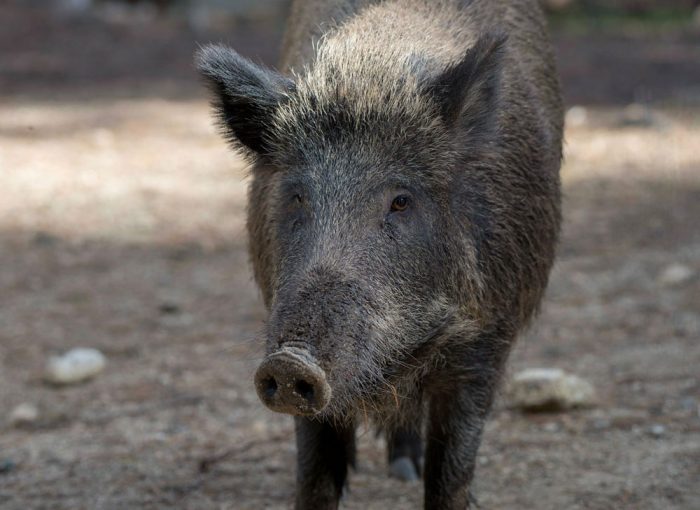
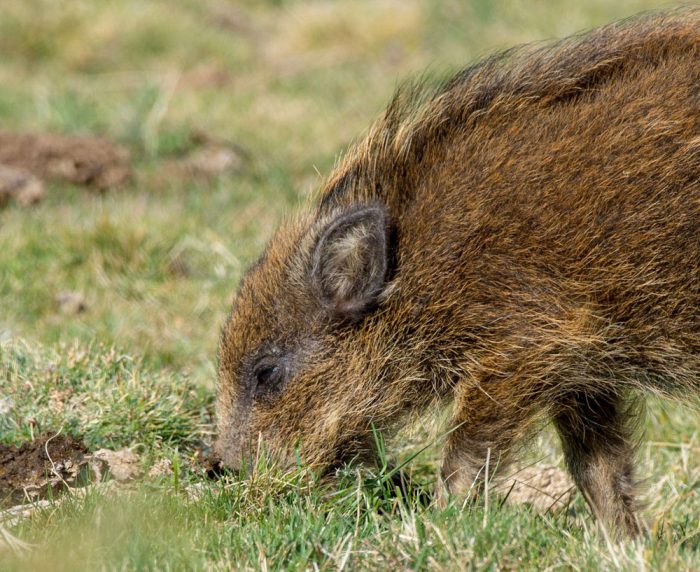
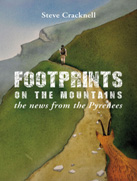
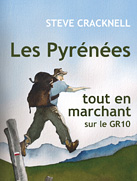
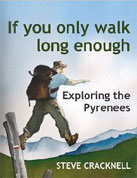





I found this a tad simplistic. Britain is a different environment because it is much more crowded and the incidents of close encounters with boar have a potential to be much more numerous.
I live in Normandy and surrounded by fields and forest…and deer and boar. First…the reason there has been a very large increase in the population of boar is not solely (or even mostly) because of mild winters. A large part of it is due to changes in farming and the use of winter cover crops and large areas of maize. Its an annual forest giving shelter and is full of food. The damage inflicted on it by boar is far from minimal. Hunting cannot keep pace with the population explosion and boar-encounters are getting more commonplace.
Boar are MUCH more dangerous than a large dog. They are built like tanks and are extremely quick. One of my encounters was with a sow with four marcassin in tow. Extremely dangerous and I was told by locals I was lucky to escape unscathed.
I find it difficult to fathom what benefit there is in ‘re-wilding’ areas of Britain that are pretty much continual swathes of suburbia. Its going to end in conflict and its going to result in the animals becoming an altogether more dangerous version of urban foxes.
Thanks Janet for your input. Personally, I don’t believe wild boar are more dangerous than big dogs. In every encounter – or near encounter – I have had with a boar it has been running away. On the other hand, I have met dogs that stood their ground or ran towards me menacingly. I was once bitten by a dog. Yes, where I live in the Aude, people say that wild boar are ‘dangerous’, but then they say that walking on your own is dangerous, that hunters are dangerous. But people don’t change their behaviour here because of their fear of wild boar.
On average 27000 in the UK are admitted to A and E each year following slipper related accidents. I think I can cope with a few wild boar tragedies. It’s the slippers I find really scary.
I think Janet has it right. The article is both simplistic and romanticised. A relative in the North East of France is President of his local Chasseurs [hunters]. They are constantly under pressure from householders and the Mairie to reduce the number of wild boar which do great damage to gardens, playing fields and parks as well as cultivated fields. The Chasseurs are “required” by the National Federation of Chasseurs to buy several 10s of “bagues” at a cost of 80 Euros per bague. That revenue is used by the national Federation to compensate farmers for crop damage. Law of unintended consequences: they cannot shoot that number in a year and chasseurs resent paying so much. Fewer chasseurs, less boar eliminated. I wonder how UK would cope with that syndrome in the absence of a similar structure. The article needed also, in the interests of balance, to cover the breeding patterns of wild boar to demonstrate the exponential rise in wild boar year on year, now without a natural enemy in Western Europe. Why encumber the nation with a problem it does not need?
The arrogance of human beings staggers me. All we can think about is ourselves and our precious gardens These animals have as much right to be here as we have. We need to be more tolerant of our natural world and celebrate it. The way we are carrying on, it won’t be here for much longer and neither will we!
The solution is to reintroduce nature’s own control; the wolf
We killed off the wolves and we caused global warming leading to rapidly increasing populations.
I can see the idea but how would it work out? There is an old nursery rhyme: “I know an old lady who swallowed a fly” in which she swallows bigger and bigger animals to kill the ones lower down the food chain. It doesn’t end well.
I loved this! As someone new to Europe, I didn’t know they were so widespread and I thought that they were more of a threat. It was fascinating to learn a little about their status and nature. Thanks for the insights.